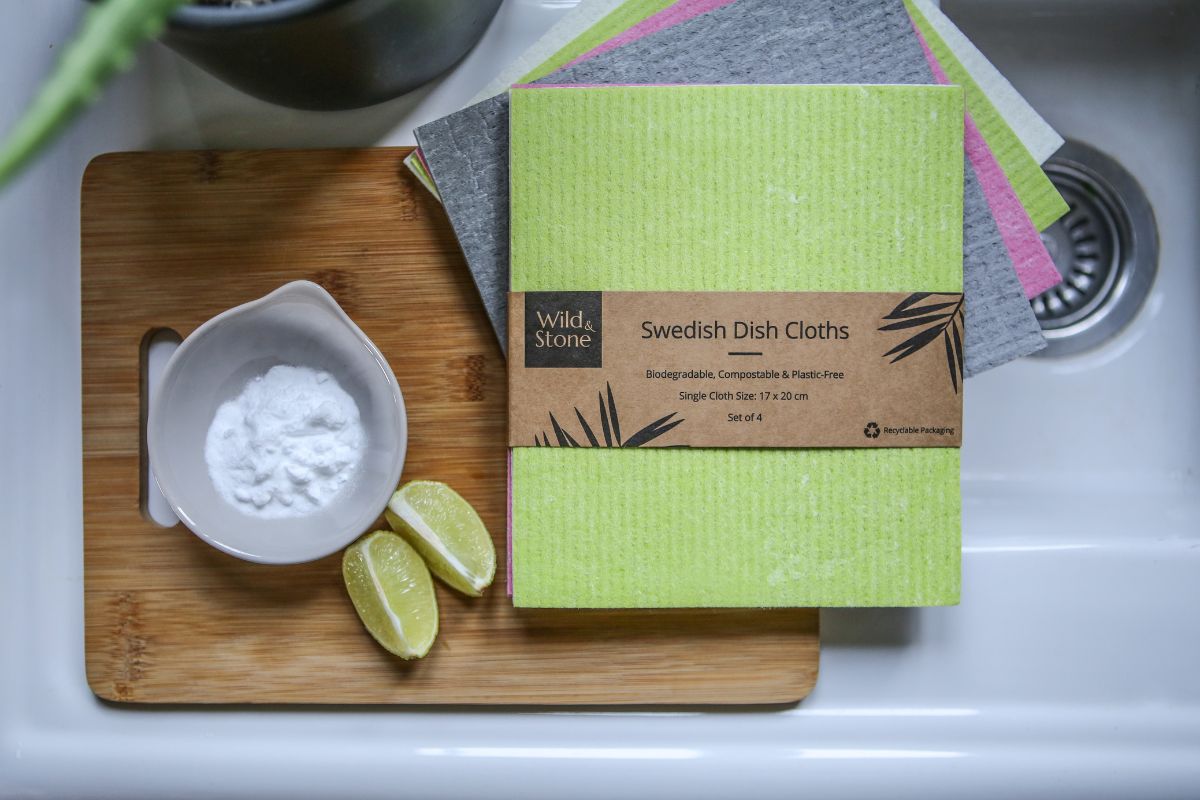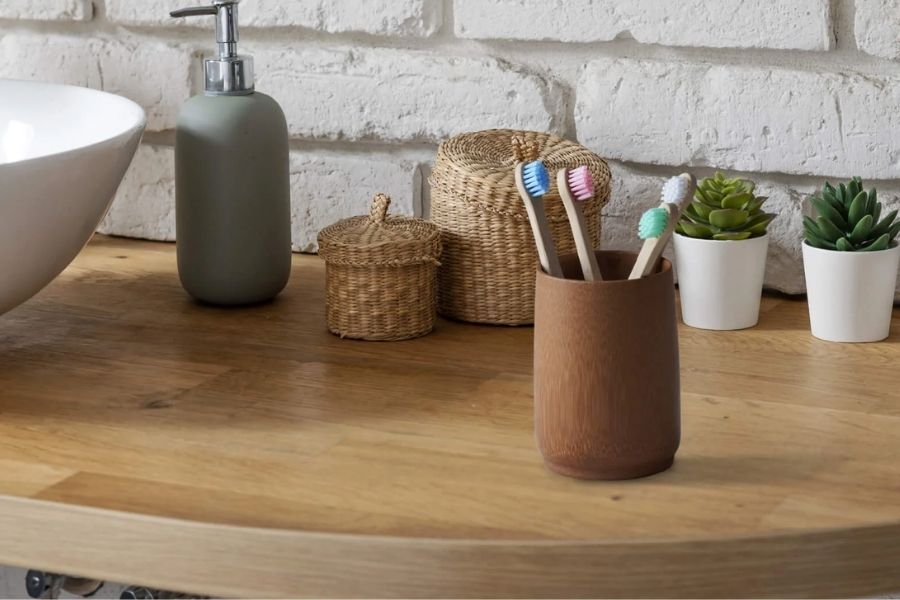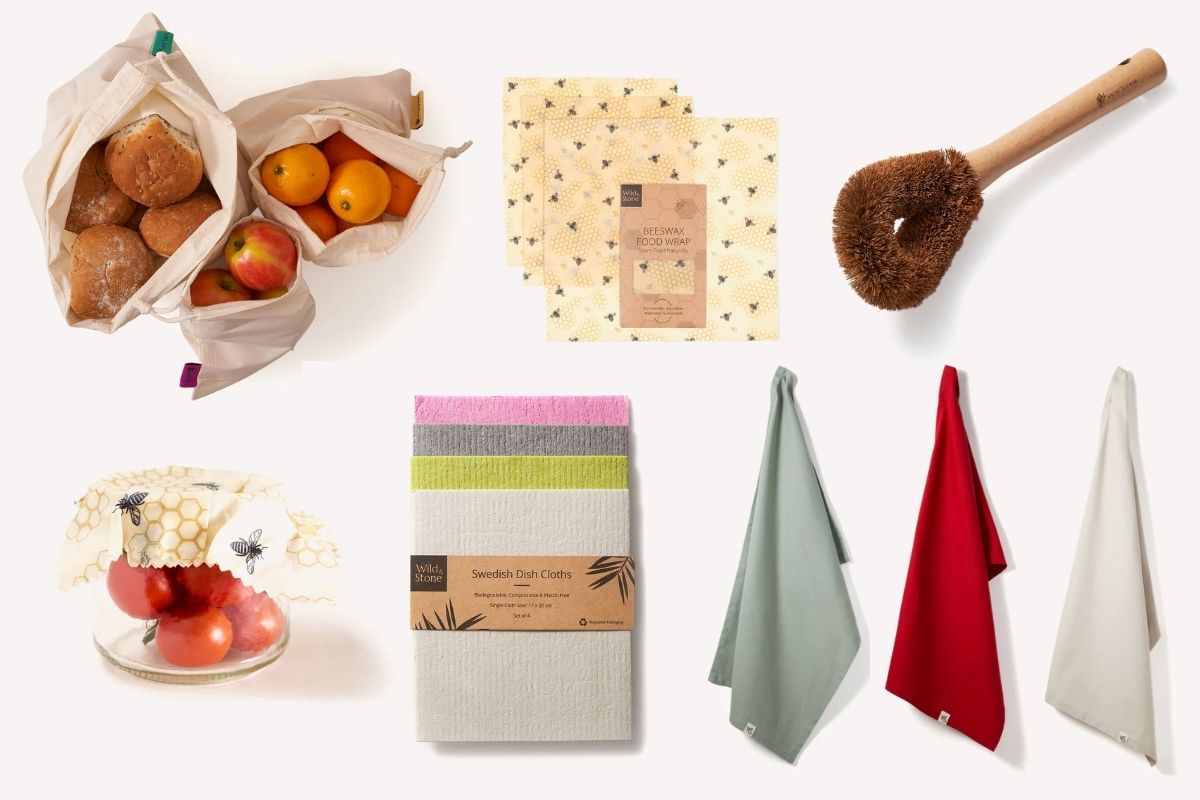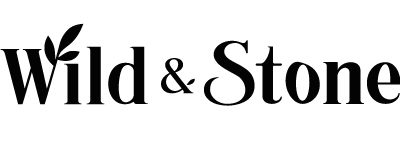Your Cart is Empty
INFO

Everything You Need to Know About Swedish Dishcloths
May 06, 2025 5 min read
Whether you're wiping up spills or scrubbing pans, Swedish dishcloths are a powerful reusable alternative to paper towels. But why? How do these cloths work, and are they worth the investment?
In this guide, our experts share everything you need to know about Swedish dishcloths, including their benefits, uses, and how they compare to sponges and microfibre cloths.
What is a Swedish Dishcloth?
Invented in the 1950s by Swedish engineer Curt Lindquist, Swedish dishcloths (or Wettex, as they’re originally known in Sweden) are made from around 70% wood pulp cellulose and 30% cotton. This makes a lightweight cloth that's comparable to Styrofoam when dry, but behaves like a regular cloth when wet.
The reason behind this? Lindquist wanted to create a dishcloth that dries quickly like a towel, but is very absorbent like a sponge. Swedish dishcloths can also be washed in the dishwasher or a washing machine and reused again and again.

How Do You Use a Swedish Dishcloth?
To use a Swedish dishcloth, you wet it first and rinse it out. Once it’s damp, but not dripping with water, you use it like a sponge or a wet paper towel.
If you want to absorb a spill, you can place the dishcloth over the liquid while it’s dry, though it will still pick up liquid when wet.

How Do You Clean a Swedish Dishcloth?
You can put a Swedish dishcloth in your dishwasher or washing machine to clean it. Ours can be washed up to 90 degrees Celsius.
You can also wet the cloth and put it in the microwave for one to two minutes to disinfect it. A damp cloth is important for even heat distribution, which prevents sparking in the microwave.
Alternatively, Swedish dishcloths can also be boiled to disinfect them.
Benefits of a Swedish Dishcloth
The biggest benefit of a Swedish dishcloth is its absorbency level. As mentioned above, these dishcloths have the absorbency of a sponge but dry quickly like a paper towel. One dishcloth can absorb 15 to 20 times its weight in liquid, while still drying faster than the average sponge or dishcloth. But there are a host of other benefits of using one.
1. Plastic-Free
Swedish dishcloths encourage an environmentally friendly and plastic-free clean.
One 2012 study from MIT found that two paper towels account for approximately 15 grams of CO2 emissions (or about the same as burning 11 gallons of gasoline). Swedish dishcloths, on the other hand, are made from plant fibres, but they extend the lives of those fibres as many times as you're able to use the cloth.
Thus, if a three-pack of Swedish dishcloths has the same carbon footprint as a roll of paper towels, as Earth911.com estimates, then switching to dishcloths can help families eliminate about 200 pounds of CO2 emissions each year.
2. Reusable & Compostable
Swedish dishcloths are dishwasher and washing machine safe, meaning you can wash them between uses and use them again and again. Better yet? Once you’re finished with the cloth, you can cut it into strips and place it in your household compost bin.
3. Cost-Effective
One single Swedish dishcloth can replace over six months of paper towel purchases, which can save you 10s to 100s of £s each year. More on this below!
4. Durable
Swedish dishcloths last! Longer than paper towels, sponges and microfiber cloths. It is anticipated that they’ll withstand at least 200+ washes before needing to be replaced.
5. Stylish
Their thin, foldable design fits in drawers for sleek storage, and their fun and colourful patterns make for a more stylish clean. Ours are printed with water-based and environmentally friendly ink.

What You Can Do With a Swedish Dishcloth?
What can’t you do with a Swedish dishcloth?!
Swedish dishcloths are designed to be used for all of the same tasks that you would use a regular paper towel for (and more). This includes wiping down surfaces, absorbing and cleaning spills, washing dishes and silverware, wiping dust-prone surfaces, cleaning windows and floors, scrubbing baked-on pots, and polishing appliances without streaks.
And it doesn’t stop in the kitchen. They’ll tackle all your bathroom surfaces and white goods, and can be used all around the house and in your car. They can even be used to germinate seeds or to prevent soil from leaving your potted plants!
Their only limitations? Drying dishes. They’re a bit too stiff when dry to replace your trusty tea towel. And we’d avoid using heavy grease or harsh chemicals, which can degrade their fibres quicker. The good news is that the average Swedish dishcloth still packs loads of cleaning power when using natural cleaners instead.

How Many Paper Towels does a Swedish Dishcloth Replace?
One single Swedish dishcloth replaces at least 15 rolls of paper towels. This means that a household using 100+ rolls yearly could eliminate ~1,500 paper towel rolls with 10 cloths.
Swedish Dishcloths vs. Sponges
You might be surprised to hear that a sugar-cube-sized piece of sponge can contain billions of bacterial cells. Kitchen sponges harbour a large number of bacteria, even when cleaned, due to their “pockets” of varying sizes. Usually, for a healthy person, the bacteria inside the kitchen sponge are not harmful. However, a Swedish dishcloth almost eliminates this risk due to its make-up and faster drying time, which discourages bacterial growth.
Swedish Dishcloths vs. Microfiber Cloths
Ok… but what about microfiber cloths? Microfiber cloths are slightly less absorbent than Swedish dishcloths and, critically, are made from plastic. This means they’re derived from fossil fuels and are prone to shedding harmful microplastics, which hurt the environment and our health.
Not to mention that both sponges and microfibre cloths require frequent replacement and take a long time to decompose. Whereas Swedish dishcloths last.

Are Swedish Dishcloths More Sanitary?
Yes! Their quick-drying nature reduces bacteria growth and the risk of mould. Plus, they’re machine-washable. Just avoid putting them in the dryer.
Are Swedish Dishcloths Worth It?
So are they worth it? Absolutely yes. Swedish dishcloths are incredibly absorbent, dry faster than their alternative, and last, while still getting the job done. And with a price point of less than £10 for a pack, you're not spending loads to get results.
And the reviews are good too. Our users have called them “the perfectalternative to plastic sponges”, “so versatile for all cleaning jobs”, their “go-to dish cloths” and more. There’s also a great article by Jacob Dean which describes his newfound love for Swedish dishcloths - “exceptionally useful, printed with a wide array of fun colours and images, and are compostable and ecologically-friendly, and a fun, low-cost purchase that you can feel good about.” So if you don’t take it from us, take it from them!
Have any more questions about Swedish dishcloths? Get in contact with our friendly experts at Wild & Stone.
Wild & Stone's mission is to create stylish and easy-to-adapt alternatives to common plastic products around the home. We source all our products sustainably, from raw material to final delivery. This includes ourcompostable Swedish dishcloths. They come in a pack of 4 different colours, which are handy to identify which cloth you use for where in the home.
Shop all of oursustainable home & lifestyle products on our website, or discover ourhousehold collection for more kitchen and bathroom swaps.
Share your plastic-free swaps with us at hello@wildandstone.com or tag us on Instagram #wildandstone.
Also in Sustainable Living Blog

The 5 Benefits of Using a Bamboo Toothbrush
August 07, 2025 4 min read
Discover five benefits of using a bamboo toothbrush, from saving the planet and oral health to the fastest plant in the world.

The 5 Best Eco-Friendly Kitchen Products
July 30, 2025 4 min read
Discover the 5 best eco-friendly kitchen products to take care of yourself, your home & the environment.
Make your inbox a little more eco!
Sign up and save 10% on your first order of 2 items or more.
Keep an eye on your inbox for the latest eco trends, articles, deals and product releases.



